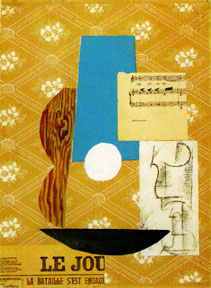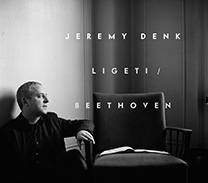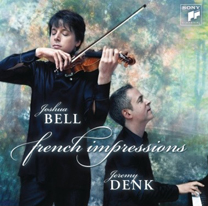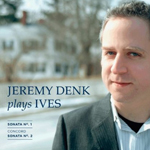I was going to write a huge, fancy prologue to justify how I got all pissed off about a few things, but my own prologue also pissed me off. It’s like when people say fifty times during their academic paper “there is no time or space here, unfortunately, to go into these fascinating issues” but if they had cut every occurrence of that phrase there would have been oodles of time. A skeptical person might wonder if those issues would have proved as fascinating as promised.
So, straight to the stringy meat of the matter. No bush-beating. With all due respect, I hated this line from David Lang’s recent op-ed in the New York Times:
Imagine a baseball game in which all the players dress up in the uniforms of a hundred years ago, and then follow, pitch by pitch, a classic match-up from the past.
My first objection is admittedly a bit personal. Although my favorite concert apparel sometimes smells like it’s a hundred years old, it’s really only a few years old. If you must know, it’s Joseph Abboud, 2005 (endorsement?). I actually think, based on a few isolated recent remarks, which I hoped were not ironic, it’s coming into fashion again. It’s just a velvet jacket with pinstripes, OK?
Ahem. Now let me try to address the wider issues. I empathize with David Lang’s larger point. But I have to confess I am slightly (as in rabidly) prejudiced against sports-music metaphors, in the same way that I detest phrases like “Beethoven was the Jimi Hendrix of his time” … although I realize the importance of bringing classical music into semantic proximity with things that people actually like.
David is giving us a metaphor for the classical concert experience, hyperbolically, to emphasize its absurdity, i.e. as in, look how ridiculous it is, all of those people in their tuxedos playing old music! Now, I agree a classical concert can sometimes seem or even be absurd. But am I the only performer out there who finds this metaphor demeaning? Is that what composers think we do? The association I get is that classical performers are something like Civil War reenactors. We prance out there in our silly clothes and try to mimic some thrilling event of the past, but it’s a battle so predictable and harmless that people are serving drinks, memorabilia: we already know the score, who won, who marched where, who pitched a fast ball, who had better cannons, who committed an error, what handkerchief Napoleon sneezed into, no matter what detail you choose, the point is the result is foregone.
When I was a child, my parents took me to a Revolutionary War reenactment, and it was ridiculously hot and my mother got faint from the heat and had to be tended in an ambulance. I forgot who won. Come to think of it, ambulances are present at many classical music concerts too.
David’s metaphor, which attempts to capture the absurdity of the classical concert, is itself absurd. It collapses upon the slightest examination. Suppose you were to reenact a baseball game, “pitch by pitch,” the way he suggests. OK, you have somebody out there, and you say throw a curve ball, that’s what happened in the original game, and the guy throws a curve ball, would he be lucky enough to capture the exact curve of the pitch as thrown in 1959 or whenever? And if so, would the breeze floating across the field be precisely the same so that the parabola of the ball would confuse the batter in precisely the same way, and the flutter of the flags and the taste of the beer in the stands and the sweat and hope of the players would those be the same too? You get my point. Reality would continuously, infinitely frustrate the recreation of the ephemeral event, and you would never get the same score. A baseball game CANNOT be reenacted in this way, and that is why it is absurd to do it, and that is why the metaphor is silly, not because classical music is silly. The only way to “replay” a baseball game would be to DVR it and watch it, or devise some incredibly subtle robots to perfectly recreate every single muscular movement of all those players on the field, a technological feat that might pointlessly consume many programmers’ lifetimes.
Actually I often dream of being a robot in my dressing room. A hypothetical robot with feeling, that would always play the piece in concert as well as the best time I ever played it. The ideal of robotic, repeatable perfection is naturally very alluring to classical performers, especially since the diabolical invention of the recording, in the face of the desperate moment of the irrecoverable performance. The most amazing emotive spontaneity fused with uncanny preternatural perfection and repeatability: these are the incompatibles that we classical musicians are encouraged to seek out simultaneously, for fear that the critics will say either that our fingers are not what they might be or our souls are bereft. I think David Lang is on to something (but certainly not the only person to be on to it) that there is a sense of ennui in certain performances of classical music, a sense of the hamster in the wheel, and we classical musicians need to lay the blame at our own feet: perhaps one factor is that certain kinds of perfection are seductive, and easily confused with musicianship? Other factors may include fear and tradition, and possibly inadequate snacks.
The point is, this particular bit of the baseball game analogy is ridiculous and unproductive (not to mention demeaning): the more apt comparison is rereading a great book, or re-performing a play, etc. etc. Is it silly to dress up in costumes and reenact King Lear? Baseball games, replayed hundreds of times, would become unspeakably boring … the element of suspense, of not knowing how it will turn out, is fairly central to its effect. One might admire and replay certain great athletic moments, certain beautiful leaps and astonishing swings, but that is why sports events tend to coalesce into “highlight reels,” immortal catalogues of astounding seconds. Highlights of artistic works tend to change as you absorb them over time, as you feel your way into their fabric. Knowing how King Lear ends does not ruin any of its effect.
OK, here’s where I get a bit even more pissy.
I know, I know, we performers are just re-creators and not creators, like you composers. I get it, I’m fine with it. However, what we do is not a reenactment, our clothes are not uniforms, any more than yours are (don’t get me started on composers’ outfits). We get up in clothes that seem appropriate for the event, and what do we do? — We supply all the information that the score does not, could not, could never. The classical musical score is a beautiful, endangered, characteristically outmoded thing (one doesn’t really look at the “score” of a pop song, right?), capable of infinite realizations and suggesting, implying so much more than any performance. In that sense, the score is “bigger” than us, and quite obviously much more important than our performance. It communicates powerfully the thoughts of geniuses past, and present. On the other hand, the score is not alive, in the same sense that a printout of a genome is not a living thing. The life between the notes on the page is there, written, implied, encoded, but lacks some information that can never be captured on the page, millions of little decisions, understandings, interpretations: those are the performer’s job, the flesh of sound. In that sense of being at least alive, any one performance at that moment is “bigger” than the score. That’s such a beautiful symbiosis: two things both (impossibly) bigger than the other.
David, I’m totally down with you that I wish classical music felt more in the present, more on the edge of its seat. I’ll go a bit further. I wish certain pieces (Beethoven Op. 96 or 111 for instance) could be free, float free from any gripe or rave, free from the bitchy comment or political posturing, free from “what a WONDERFUL piece” and other kinds of cloying adoration, free from endless comparison and re-comparison, free from receptions, free from op-eds, free from the particular concert with the coughing person or the out of tune piano or smelly tuxedo or whatever it is, but of course this purifying freedom would kill these pieces I love.
David, you focus pretty harshly on the pastness of classical concert life. To hear you talking, it’s all old hat. Agreed, we need much more of the frisson of what the hell is going to happen and it would be great to have more people thrilled about new music concerts! It would also be great to have lollipops falling from the sky.
But I would suggest there’s another way to express this pastness. Clothes from 1840, for instance, aren’t really worn anymore (for the most part, just go with me on this). Political thinking has changed, society has altered itself … Isn’t it kind of a miracle that some music survives from 1730, that certain pieces of music survive for hundreds of years? Music that should by all rights be dead because of changing fashion, taste, lifestyle, the deterioration of parchment, whatever. But somehow it’s held on. It’s endangered, to be sure. It’s the dodo bird of music, perhaps, waiting to be made inevitably extinct by encroaching generations of Biebers, by deafening headphones, but still we can read the present in that past. So fabulous, so thrilling?
Let me throw you a metaphor, David: classical performers are like crusty sailors atop a rusty boat, saying “there’s life in the old girl yet.” It’s terrible but I think it’s funnier than yours. Actually, hold on, I have one more–just for kicks and giggles. Society in general is not enthralled with classical music. Who knows why, it’s a symbol for fustiness, for fancy parties with buffets, for rich jerks on yachts, etc. etc. “High classical music” (let’s say Mozart Haydn Beethoven) is a bit like Latin, like a language holding on against changes in style, in desire, in fashion, but somehow it’s still holding on. It is widely shunned, it should be dead, and yet we performers insist on resurrecting it, because we love it: we try to throw a bit of electricity into it, and suddenly, hopefully, the corpse revives … and what do you know, despite the townspeople’s dismay, the creature has a certain ineffable tenderness, it communicates … my metaphor must be obvious by now, classical performers aren’t Civil War re-enactors, we’re actually Doctor Frankensteins!, which is much cooler.
I’m finished with this ridiculous rebuttal. There are all sorts of fascinating side issues I would love to cover, but there’s no time, Dr. Denkenstein has many corpses to revive.
 self-flagellation it is unequalled. Although I bought a small Christmas tree, plopped it atop the piano, decorated it with lights–well, somehow I had trouble summoning the Christmas spirit. Over Ligeti’s enormous dissonant chords and clusters, quadruple forte, I started screaming holiday messages, like “Happy New Year!,” “Best Wishes of the Season To You!,” partly to scare the neighbors.
self-flagellation it is unequalled. Although I bought a small Christmas tree, plopped it atop the piano, decorated it with lights–well, somehow I had trouble summoning the Christmas spirit. Over Ligeti’s enormous dissonant chords and clusters, quadruple forte, I started screaming holiday messages, like “Happy New Year!,” “Best Wishes of the Season To You!,” partly to scare the neighbors. 


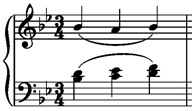
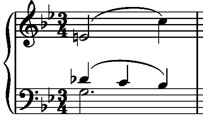

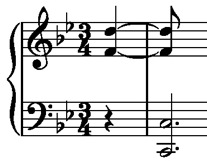
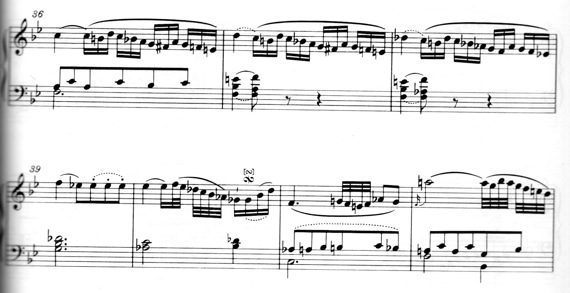

 A slice of slightly crusty Monterey Jack from the back of the refrigerator did not bring comfort. All sorts of anxieties bubbled out of my last hour of sleep: even they were groggy, dazed … maybe a bit crabby.
A slice of slightly crusty Monterey Jack from the back of the refrigerator did not bring comfort. All sorts of anxieties bubbled out of my last hour of sleep: even they were groggy, dazed … maybe a bit crabby.